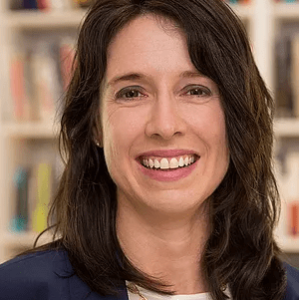How AEP Is Powering An Appalachian Community To Thrive


 It might seem illogical for a large, historically fossil-fueled power company to lead Appalachia out of coal. But it’s key to American Electric Power’s (AEP’s) strategy to power communities in Ohio, Kentucky, and West Virginia with carbon neutral energy and also help them prosper.
It might seem illogical for a large, historically fossil-fueled power company to lead Appalachia out of coal. But it’s key to American Electric Power’s (AEP’s) strategy to power communities in Ohio, Kentucky, and West Virginia with carbon neutral energy and also help them prosper.
Like Don Katz, CEO of Audible, who is trying to turn around Newark, AEP executives are leading a growing trend in business to drive social responsibility down to the local level. Four steps guide AEP’s work as an Appalachian anchor institution—one with an enduring geographic presence and strong local ties that works with other community leaders to innovate the future.
AEP’s carbon neutral strategy is an unintentional part of Appalachia’s pain. Like other big power companies, AEP is gradually shuttering its coal operations. Over half of its energy will come from renewable sources by 2030.
This is good for the environment, but bad for coal workers, who are struggling for survival. Job losses radiate negative multiplier effects; for every coal job that goes away, two to three others also disappear from communities.
Instead of ignoring the fallout, AEP is spearheading the region’s economic renewal. In 2017, it funded a comprehensive workforce analysis to pinpoint Appalachia’s unique strengths. Until then, no one had realized that the region had eight times the national average of skilled metalworkers, who are highly sought after in aviation and aerospace.
The analysis lit a visionary path forward: improve infrastructure and equip coal workers for new, high-paying jobs in aviation and aerospace. Revitalizing the local economy is not only good for American workers; it also grows customer demand for AEP energy.
When business leaders invite stakeholders to the table, people show up. AEP executives used their strong local relationships to convene a diverse economic renewal coalition: elected officials, educational institutions, economic development groups, aerospace companies, and regional airport and port authorities.
Named after the film and book “October Sky,” Appalachian Sky connects people emotionally to a larger purpose and identity about who “we” are. AEP’s workforce data show that Appalachian coal miners and steel workers have deep roots in the region and are fiercely loyal to their communities. They don’t want to relocate; they want to remain where their families have lived and worked for generations.
Appalachian Sky’s work is partly external, promoting the loyalty, strong work ethic and creativity of the workforce to new industry prospects, and partly internal, mirroring back to the community its own rich history and investing in its capacity for future innovation.
Even with a clear vision, stakeholder partnerships often get mired in competing priorities and stumble during implementation. The solution is focusing on a small number of attainable goals, and using measurable wins to build momentum and trust among partners.
The Appalachian Sky strategy is genius in its simplicity—help counties in the region achieve “AEROready” status, an independent certification that emphasizes a skilled and flexible workforce, quality sites, and strong utility and transportation infrastructure. It is a clear goal that communities can leverage into economic progress.
Focusing leadership attention on this visible goal has paid off; of the 44 AEROready certified sites in the US, 36 of them are in the Appalachian Sky region.
“Problems bring people together. It takes us all to create the solutions,” says AEP VP Brad Hall, who co-created the Appalachian Sky concept. Hall helps prepare quality industrial sites for development, and works with coalition members as an enabling leader—connecting and supporting would-be innovators to bring new ideas to life.
For instance, Appalachian Sky mapped the skills of experienced metal welders and identified future job pathways for them. In one group of 50 skilled welders with more than 15 years of experience, only five were certified as welders. Hazard Community College in Kentucky agreed to offer a five-week express certificate course for experienced welders, qualifying them for high-paying aerospace and aviation jobs, and moving their communities towards the AEROready goal.
The first greenfield aluminum project in the United States in 38 years, Unity Aluminum’s rolling mill, was due in part to Appalachian Sky’s concerted efforts. Since 2017, the region has attracted 28 new projects, almost 3,000 direct new jobs and over 7,000 total jobs. AEP’s carbon neutral strategy is a regional selling point for some customers who attach clean energy requirements as a condition for relocation.
Appalachian Sky boosts the local economy, improves the environment, and gives Appalachians their livelihoods back. Says Hall, “It’s something that we all can unify around—it helps us all see and talk about the opportunities. It gives us a vehicle we can all help move down the road.”


0

1:00 - 5:00 pm
Over 70% of Executives Surveyed Agree: Many Strategic Planning Efforts Lack Systematic Approach Tips for Enhancing Your Strategic Planning Process
Executives expressed frustration with their current strategic planning process. Issues include:
Steve Rutan and Denise Harrison have put together an afternoon workshop that will provide the tools you need to address these concerns. They have worked with hundreds of executives to develop a systematic approach that will enable your team to make better decisions during strategic planning. Steve and Denise will walk you through exercises for prioritizing your lists and steps that will reset and reinvigorate your process. This will be a hands-on workshop that will enable you to think about your business as you use the tools that are being presented. If you are ready for a Strategic Planning tune-up, select this workshop in your registration form. The additional fee of $695 will be added to your total.

2:00 - 5:00 pm
Female leaders face the same issues all leaders do, but they often face additional challenges too. In this peer session, we will facilitate a discussion of best practices and how to overcome common barriers to help women leaders be more effective within and outside their organizations.
Limited space available.

10:30 - 5:00 pm
General’s Retreat at Hermitage Golf Course
Sponsored by UBS
General’s Retreat, built in 1986 with architect Gary Roger Baird, has been voted the “Best Golf Course in Nashville” and is a “must play” when visiting the Nashville, Tennessee area. With the beautiful setting along the Cumberland River, golfers of all capabilities will thoroughly enjoy the golf, scenery and hospitality.
The golf outing fee includes transportation to and from the hotel, greens/cart fees, use of practice facilities, and boxed lunch. The bus will leave the hotel at 10:30 am for a noon shotgun start and return to the hotel after the cocktail reception following the completion of the round.